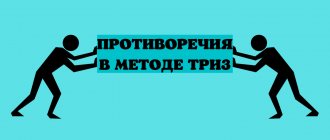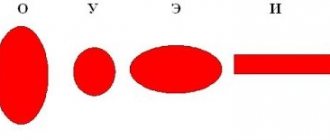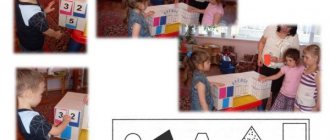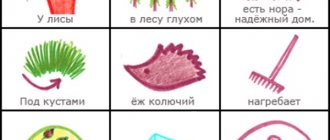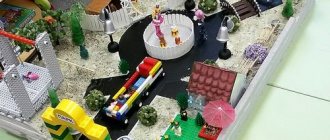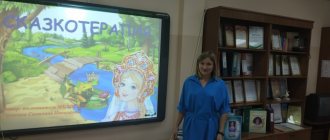Purpose of use
Now we will look at the goals of modeling (computer science, grade 11). Earlier it was said that all models are divided into certain types and classes, but the boundaries between them are arbitrary. There are several characteristics by which models are usually classified: purpose, area of knowledge, time factor, method of presentation.
As for goals, it is customary to distinguish the following types:
- educational;
- experienced;
- imitation;
- gaming;
- scientific and technical.
The first type includes educational materials. The second is reduced or enlarged copies of real objects (a model of a structure, an airplane wing, and so on). A simulation model allows you to predict the outcome of an event. Simulation modeling is often used in medicine and the social sphere. For example, does the model help to understand how people will react to a particular reform? Before performing a serious operation on a person for an organ transplant, many experiments were carried out. In other words, a simulation model allows you to solve a problem using trial and error. The game model is a kind of economic, business or military game. Using this model, you can predict the behavior of an object in different situations. A scientific and technical model is used to study any process or phenomenon (a device simulating a lightning discharge, a model of the movement of the planets of the solar system, and so on).
Verbal model
What modeling methods are there? Computer science uses only two methods - information and mathematics. But it is important to mention another type of model - verbal. We will now talk about it in a little more detail.
The verbal model belongs to the category of ideal or abstract. This is a description using letters, words, sentences. These models include:
- protocol;
- Traffic Laws;
- information in educational literature;
- fiction;
- an oral or written description of any object, process or phenomenon.
Systematic approach to creating a model
In which grade of the school curriculum is modeling studied? 9th grade computer science introduces students to this topic in more detail. It is in this class that the child learns about the systematic approach to modeling. We suggest we talk about this in a little more detail.
Let's start with the concept of “system”. It is a group of interconnected elements that work together to accomplish a given task. To build a model, a systems approach is often used, since an object is considered as a system operating in a certain environment. If any complex object is modeled, then the system is usually divided into smaller parts - subsystems.
Modeling tasks
We mentioned in the article what modeling is in computer science. This process has some challenges, which we will discuss in this section.
What is a problem in modeling? Suppose we have a problem, to solve it we need to solve a number of problems. That is, a task is a problem that needs to be dealt with. It is important to note that all tasks can be divided into two large groups.
| Type of tasks | Explanation |
| Direct | These tasks pose the following question to us: “What will happen if we choose this particular solution from a possible set?” It is worth paying attention to the fact that the direct task gives us initial data and specific conditions. |
| Reverse | Inverse problems pose slightly different questions: “How to maximize the efficiency criterion? Which of the possible solutions satisfies this condition? |
Model
Modeling in computer science is the creation of an image of any real-life object that reflects all the essential features and properties. A model for solving a problem is necessary, since it is, in fact, used in the solution process.
In the school computer science course, the topic of modeling begins to be studied in the sixth grade. At the very beginning, children need to be introduced to the concept of a model. What it is?
- Simplified object similarity;
- A smaller copy of a real object;
- Scheme of a phenomenon or process;
- Image of a phenomenon or process;
- Description of a phenomenon or process;
- Physical analogue of an object;
- Information analogue;
- A placeholder object that reflects the properties of the real object, and so on.
A model is a very broad concept, as has already become clear from the above. It is important to note that all models are usually divided into groups:
- material;
- perfect.
A material model is understood as an object based on a real-life object. It could be any body or process. This group is usually divided into two more types:
- physical;
- analog.
This classification is conditional, because it is very difficult to draw a clear boundary between these two subspecies.
The ideal model is even more difficult to characterize. It is related to:
- thinking;
- imagination;
- perception.
This includes works of art (theater, painting, literature, and so on).
Field of knowledge
In which class are students introduced to modeling in more detail? 9th grade computer science focuses on preparing its students for exams for admission to higher education institutions. Since the Unified State Exam and State Examination tickets contain questions on modeling, it is now necessary to consider this topic in as much detail as possible. So, how does classification by area of knowledge occur? Based on this feature, the following types are distinguished:
- biological (for example, artificially caused diseases in animals, genetic disorders, malignant neoplasms);
- economic (model of firm behavior, model of market price formation, and so on);
- historical (family tree, models of historical events, model of the Roman army, etc.);
- sociological (model of personal interest, behavior of bankers when adapting to new economic conditions) and so on.
Modeling Goals
Modeling in computer science is a very important stage, as it serves many purposes. Now we invite you to get to know them.
First of all, modeling helps to understand the world around us. From time immemorial, people accumulated the knowledge they acquired and passed it on to their descendants. Thus, a model of our planet (globe) appeared.
In past centuries, modeling was carried out on non-existent objects that are now firmly entrenched in our lives (an umbrella, a mill, and so on). Currently, modeling is aimed at:
- identifying the consequences of any process (increasing the cost of travel or recycling chemical waste underground);
- ensuring the effectiveness of decisions made.
Mathematical model
What other types of models are studied in computer science? Information modeling and mathematical (algorithmic) modeling are usually separated. Although, as mentioned earlier, the boundaries between verbal, mathematical and information models are very conditional.
In simple terms, a mathematical model describes any situation from a mathematical point of view. Without noticing to ourselves, we engage in mathematical modeling every day. For example: a mother sends her child to buy bread and milk. She knows how much these products cost in the store located next to her house. Now you need to calculate how much money to give the child. Suppose milk costs 75 rubles and 50 kopecks, and bread costs 30 rubles 20 kopecks. The entire purchase will cost 105 rubles, 70 kopecks (75.5+30.2). This is an example of a mathematical model.
Time factor
According to this characteristic, two types of models are distinguished:
- dynamic;
- static.
Judging by the name alone, it is not difficult to guess that the first type reflects the functioning, development and change of an object over time. Static, on the contrary, is capable of describing an object at a specific point in time. This type is sometimes called structural, since the model reflects the structure and parameters of the object, that is, it provides a snapshot of information about it.
Examples of a dynamic model are:
- a set of formulas reflecting the movement of the planets of the solar system;
- graph of air temperature changes;
- video recording of a volcanic eruption and so on.
Examples of a statistical model are:
- list of planets of the solar system;
- area map and so on.
Modeling stages
The 9th grade computer science topic “Modeling and Formalization” has a lot of weight. It is a must-learn. In grades 9-11, the teacher is required to introduce students to the stages of creating models. This is what we will do now. So, the following stages of modeling are distinguished:
- meaningful statement of the problem;
- mathematical formulation of the problem;
- development using computers;
- operation of the model;
- getting the result.
It is important to note that when studying everything that surrounds us, processes of modeling and formalization are used. Computer science is a subject dedicated to modern methods of studying and solving problems. Consequently, the emphasis is on models that can be implemented using a computer. Particular attention in this topic should be paid to the development of a solution algorithm using electronic computers.
